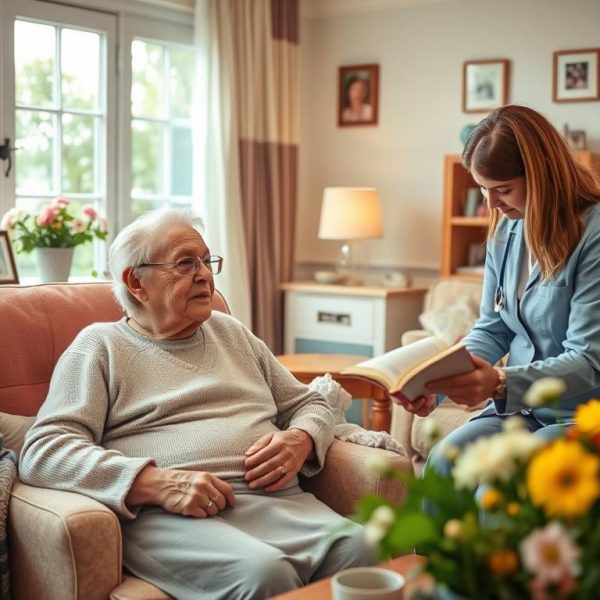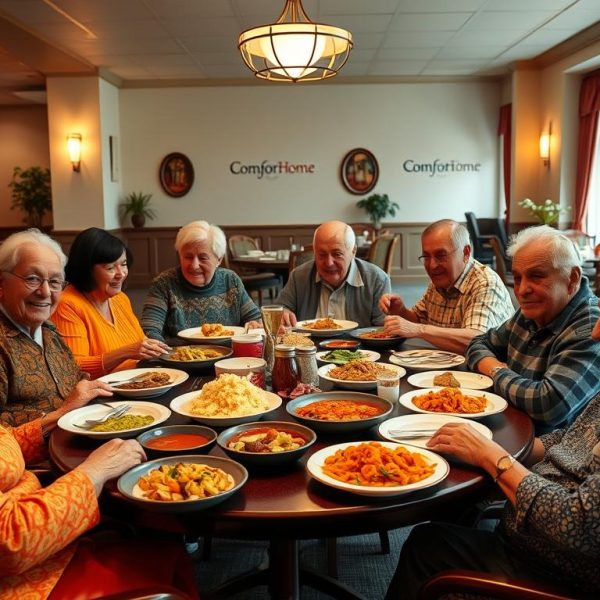Introduction: The Call to Specialized Care
Nurse Sarah had always prided herself on her ability to connect with patients. Whether it was a comforting word or a well-timed joke, she had a knack for making people feel at ease. But over the years, Sarah realized that pain management was one of the most challenging aspects of her job. Each patient experienced pain differently, and what worked for one person might not work for another. As she gained more experience, she understood that managing pain required not just medical knowledge but also a deep understanding of the diverse populations she served.
Sarah’s journey into specialized pain management began on a cold winter morning when she was called into a meeting with Dr. Martinez, the head of the hospital’s pain management team. Dr. Martinez had a reputation for being both compassionate and exacting, and Sarah was eager to learn from him. The meeting would mark the beginning of a new chapter in her career—one that focused on developing tailored pain management strategies for diverse patient populations.
The Importance of Tailored Pain Management
As Sarah soon learned, pain is a highly individualized experience, influenced by a myriad of factors including age, gender, culture, and medical history. Dr. Martinez emphasized that one-size-fits-all approaches to pain management were not only ineffective but could also be harmful. Different patient populations required different strategies, and understanding these nuances was key to providing effective care.
Dr. Martinez shared a story that struck a chord with Sarah. A few years ago, he had treated a young woman, Maria, who had recently emigrated from Central America. Maria was in labor with her first child and was clearly in a great deal of pain. However, she refused pain medication, saying that in her culture, childbirth was seen as a test of strength and endurance. Instead of pushing her to take the medication, Dr. Martinez worked with Maria to find alternative ways to manage her pain, including breathing exercises and massage. Maria’s labor was long and difficult, but she felt empowered by the experience, and her pain was managed in a way that respected her cultural beliefs.
This story underscored the importance of understanding the patient’s background and preferences when developing a pain management plan. For Sarah, it was a reminder that nursing was as much about listening and empathy as it was about clinical skills.
Managing Pain in Older Adults: A Gentle Approach
One of Sarah’s most memorable patients was Mr. Johnson, an 82-year-old man who had been admitted to the hospital after a fall. He had a hip fracture and was in considerable pain. Mr. Johnson reminded Sarah of her grandfather, which made her even more determined to ensure that his pain was managed effectively.
Older adults like Mr. Johnson often have unique challenges when it comes to pain management. They may have multiple chronic conditions, be on several medications, and be more susceptible to side effects. Additionally, cognitive impairments like dementia can make it difficult for them to communicate their pain.
With older adults, Sarah learned to take a gentle approach. She knew that opioid medications, while effective, carried a higher risk of side effects like confusion, constipation, and respiratory depression in this population. Instead, she worked with the team to use a combination of non-opioid pain relievers, physical therapy, and non-pharmacological interventions like heat therapy and gentle massage.
Sarah also found that regular communication was crucial. She made it a point to check in with Mr. Johnson frequently, asking him about his pain levels and adjusting the plan as needed. She learned to read his non-verbal cues, like facial expressions and body language, which often spoke louder than words.
By the time Mr. Johnson was discharged, his pain was well-controlled, and he was on the road to recovery. Sarah felt a deep sense of satisfaction knowing that she had helped make his hospital stay more comfortable and that her tailored approach had made a real difference.
Pain Management for Pediatric Patients: Comfort and Compassion
One afternoon, Sarah was assigned to the pediatric ward, where she met Emily, a six-year-old girl who had been admitted for appendicitis. Emily was terrified—of the hospital, of the upcoming surgery, and most of all, of the pain. Her mother, Mrs. Parker, was just as anxious, wringing her hands and hovering over her daughter’s bed.
Managing pain in pediatric patients like Emily requires a delicate balance of medical expertise and emotional support. Children often cannot articulate their pain in the same way adults can, and their fear of the unknown can exacerbate their discomfort.
Sarah knew that building trust was the first step. She spent time talking to Emily about her favorite things—unicorns, her dog Max, and her best friend from school. Slowly, Emily began to relax. Sarah also involved Mrs. Parker in the care process, explaining each step and encouraging her to stay calm, as children often take emotional cues from their parents.
For pain management, Sarah worked closely with the pediatric team to use age-appropriate analgesics. They opted for acetaminophen and ibuprofen, avoiding stronger medications unless absolutely necessary. Sarah also introduced non-pharmacological techniques like distraction, using a tablet to play Emily’s favorite cartoons during painful procedures.
When Emily came out of surgery, Sarah was there, holding her hand as she woke up. Thanks to the team’s efforts, Emily’s pain was well-controlled, and she was soon smiling and telling Sarah all about her dog Max again. For Sarah, the experience reinforced the importance of combining medical care with compassion and comfort, especially with young patients.
Addressing Pain in Patients with Chronic Conditions: A Multidisciplinary Approach
One of the most challenging patients Sarah encountered was Mrs. Williams, a 55-year-old woman with rheumatoid arthritis. Mrs. Williams had been living with chronic pain for years, and despite numerous treatments, she still struggled to manage it. Her pain was not only physical but also emotional, as the constant discomfort had taken a toll on her mental health.
Chronic pain management requires a multidisciplinary approach, and Sarah knew that no single treatment would be enough for Mrs. Williams. She collaborated with a team of specialists, including a rheumatologist, a physical therapist, and a psychologist, to develop a comprehensive pain management plan.
The team decided to use a combination of medication, physical therapy, and cognitive-behavioral therapy (CBT). Mrs. Williams was prescribed disease-modifying antirheumatic drugs (DMARDs) to address the underlying inflammation, along with pain relievers for acute flare-ups. Physical therapy focused on exercises to maintain mobility and reduce stiffness, while CBT helped Mrs. Williams develop coping strategies to manage the emotional impact of her pain.
Sarah played a crucial role in coordinating this care, ensuring that Mrs. Williams felt supported and understood throughout the process. She checked in regularly, offering encouragement and adjusting the care plan as needed. Over time, Mrs. Williams reported not only a reduction in her pain but also an improvement in her overall quality of life.
This experience taught Sarah the value of a holistic approach to pain management, particularly for patients with chronic conditions. It wasn’t just about relieving pain but about helping patients regain control over their lives.
Cultural Sensitivity in Pain Management: Respecting Beliefs and Preferences
Sarah’s most eye-opening experience in pain management came when she cared for Mr. Ali, a 40-year-old man from the Middle East who had been admitted for a severe back injury. Mr. Ali was reluctant to take pain medication, citing cultural and religious beliefs. His family also expressed concerns about the use of certain medications.
In cases like Mr. Ali’s, cultural sensitivity is crucial. Pain is not just a physical experience; it is also shaped by cultural, religious, and social factors. Sarah knew that imposing her own beliefs or the hospital’s standard protocols would not work. Instead, she took the time to understand Mr. Ali’s perspective and worked with him to find a pain management plan that respected his beliefs.
After several discussions, Sarah and the team developed a plan that included non-pharmacological interventions like physical therapy, acupuncture, and relaxation techniques. They also used low-dose pain medication when absolutely necessary, with Mr. Ali’s full consent.
This experience reinforced for Sarah the importance of cultural competence in nursing. Every patient is unique, and effective pain management requires a deep understanding of their individual beliefs, values, and preferences. By respecting Mr. Ali’s cultural background, Sarah was able to build trust and provide care that was both effective and respectful.
Pain Management in End-of-Life Care: Balancing Comfort and Dignity
One of the most emotionally challenging aspects of Sarah’s job was caring for patients at the end of life. Mrs. Thompson, an 85-year-old woman with terminal cancer, was one such patient. Mrs. Thompson’s pain was severe, and her family was struggling with the decision of whether to increase her pain medication, knowing it might hasten her passing.
End-of-life care requires a delicate balance between managing pain and maintaining the patient’s dignity. Sarah knew that this was a deeply personal decision and that her role was to support both Mrs. Thompson and her family through this difficult time.
Sarah spent time talking with Mrs. Thompson and her family, helping them understand the options and the potential outcomes. She worked closely with the palliative care team to adjust Mrs. Thompson’s pain management plan, using medications to ensure her comfort while also respecting the family’s wishes.
In the final days, Sarah’s focus was on providing comfort and ensuring that Mrs. Thompson’s remaining time was as peaceful as possible. She held Mrs. Thompson’s hand, listened to her stories, and offered words of comfort to her family. When Mrs. Thompson passed away, her family expressed their gratitude for the compassionate care she had received.
This experience taught Sarah that pain management in end-of-life care is about more than just relieving physical pain—it’s about honoring the patient’s wishes and providing emotional and spiritual support to both the patient and their loved ones.
Conclusion: The Art of Tailored Pain Management
As Sarah reflected on her journey, she realized that pain management was not just a science but an art. It required a deep understanding of the diverse populations she served and the ability to tailor care to meet their unique needs. Whether it was an older adult, a child, a chronic pain sufferer, or a patient at the end of life, Sarah knew that effective pain management was about more than just medications—it was about compassion, empathy, and a commitment to providing holistic care.
For nurses and healthcare providers, enhancing expertise in specialized pain management is an ongoing journey. It’s about continuously learning, growing, and adapting to meet the needs of diverse patient populations. And ultimately, it’s about making a difference—one patient at a time.








